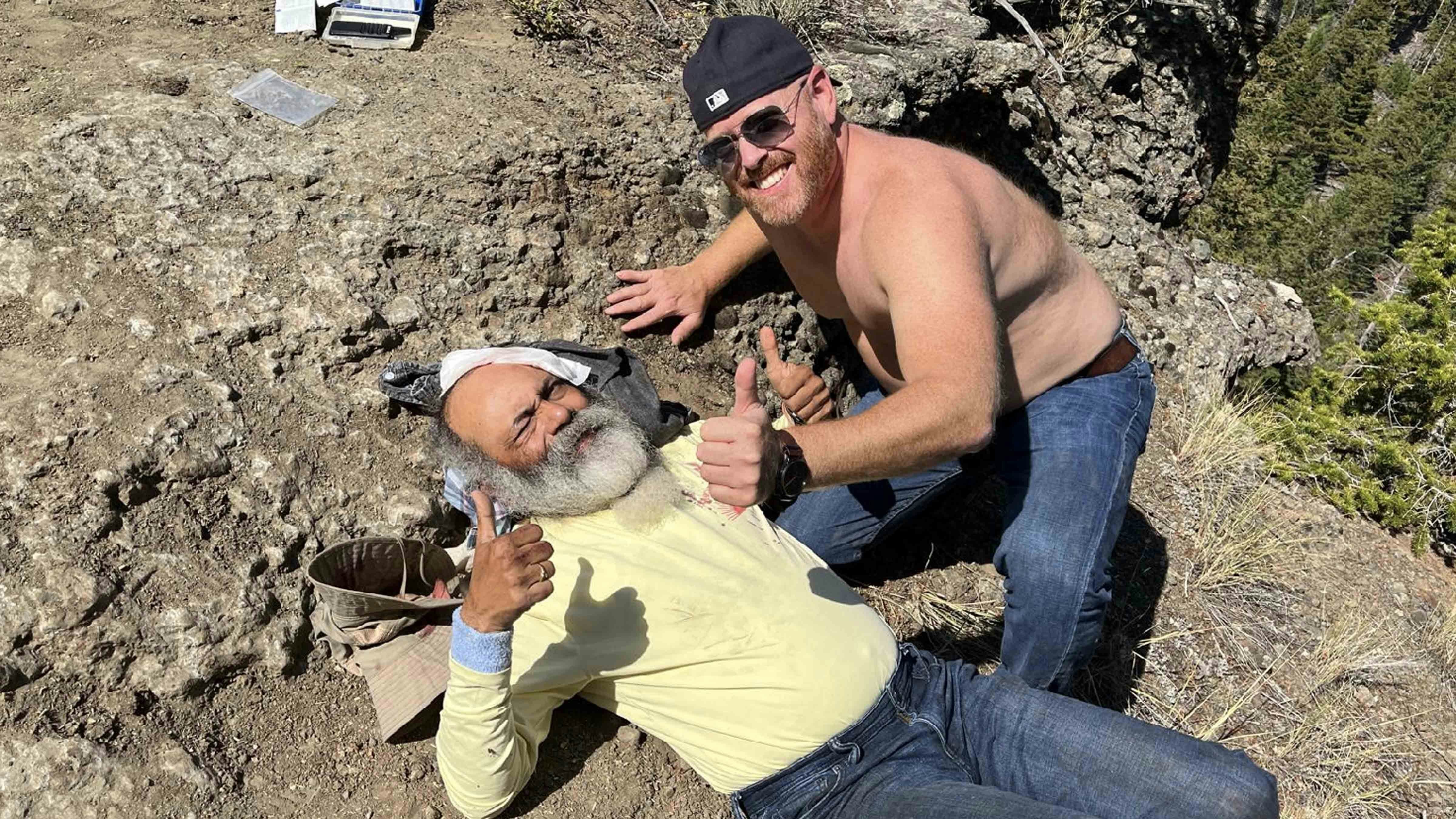Wolves are pursuit predators, meaning they hunt by running down their prey until they can subdue it, often as a pack. That usually means ambushing and chasing elk and bison until they can bite and bring them down.
The goal is to fully subdue and kill the animal before dining on it.
They’ll also take any opportunity to not have to chase down their dinner, claiming carcasses and picking them clean, like a wildlife filmmaker recently documented over a six-week period near Togwotee Pass.
So, what happens when a wolf's dinner tries to make an escape after it's dead?
That's what Gardiner, Montana, resident and wildlife photographer April Mead observed in Yellowstone National Park earlier this month when a wolf went into the Yellowstone River to chase a rack of ribs being carried away by the current.
"It was a once-in-a-lifetime opportunity," Mead told Cowboy State Daily. "It was my top wolf encounter of the year, for sure.”
In a video of the chase Mead shared, at one point a voice in the background comments on the scene: “Runaway dinner.”
Once the wolf finally catches up and snags the ribs, then struggles to get them out of the current.
Dead Elk Escapes
After a pack of wolves killed and partially ate a cow elk near the Yellowstone River on Oct. 16, a section of its stripped skeleton got caught in the current and started heading downstream.
Even after it was dead and desiccated, the elk still attempted to escape its killers.
One wolf decided that the rack of ribs still had enough fat to chew, and Mead watched as it waded into the river and pursued the runaway remains.
"That wasn't the only wolf that tried to keep it," she said. "We were all wondering why it didn't get in front and try to block it, but it kept floating around the bend in the river."
The wolf attempted to grab onto the rack of ribs and get it back to shore. However, its sharp teeth tore through the thin strip of flesh.
Much like a dog attempting to retrieve a tennis ball from a pool, the wolf was determined — but obviously flustered — by its own limitations. The ravens watched it struggle while they waited for their turn.
Eventually, the rack of ribs returned to shore and the wolves quickly converged to finish what they started.
Mead watched as they reclaimed and continued feeding on the remains of the day.
"One of the wolves carried a big chunk of meat across the road and buried it across the river, caching it for later," she said. "It was super exciting to watch."
A Whole Day Of Wolves
The scene Mead witnessed unfolded on the shores of the Yellowstone River near Mud Volcano.
The wolves belonged to the Wapiti Lake Pack, and they were considerate enough to kill the elk in a highly visible spot.
"It is very rare to have wolves for a whole day," Mead said. "They'd taken the elk down that morning or overnight and spent most of the day crossing back and forth to the carcass, and then back up the hillside where the majority of the pack was hanging out."
When it's October in Yellowstone, every carcass is a battlefield. Mead said she watched at least two grizzlies challenge the wolves for the carcass, but the Wapiti Lake wolves held their ground and kept their meal.
Yellowstone wolves tend to live their lives at a distance from tourists. Mead said this carcass was so close to the road that the wolves stuck around and gave onlookers plenty to see.
"You don't experience wolves that close," she said. "There was a lot of really cool interaction between the pack.
"At one point, they were all howling. They had many greeting situations, and they kept crossing the road, back and forth. We were able to see and capture them without the carcass."
Yellowstone's law enforcement rangers and bear management personnel are used to dealing with bear jams, but wolves don't typically cause the same scenes so close to the road.
Mead said both teams were stationed there throughout the day to ensure all the ogling October onlookers were safe and respectful.
"People were following the rules and being respectful, for the most part," she said. "You'd have the occasional tourists that didn't understand the situation and ended up in the spots where the wolves were crossing. Once they did, they cleared their path."
Only In October
The East, South, and West Entrances of Yellowstone, along with most of the park's interior roads, close on Friday. They will reopen, only for oversnow travel, in December.
Wolves don't hibernate, so they'll continue their struggle to survive through the harsh winter ahead.
Even being the accomplished predators they are, wolves have about only a 10% to 15% success rate when they hunt adult elk, according to National Park Service wildlife biologist Dan Stahler
When wolves make a kill, they make the most of it. That's why the renegade rack of ribs was worth pursuing, even as the cold water tried to take it away.
Mead is savoring every moment in Yellowstone before the seasonal closure.
For her, this wolf encounter represents the unique atmosphere in Yellowstone during the final weeks of its summer, when the animals are active and the crowds have diminished.
"For the last few days that the interior is open, I'll be taking it all in," she said. "It's an opportunity for me and my friends to enjoy the park, the animals, and the scenery. It's so peaceful and beautiful."
Andrew Rossi can be reached at arossi@cowboystatedaily.com.






